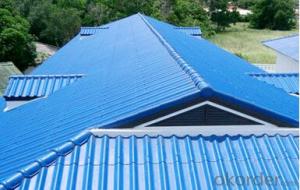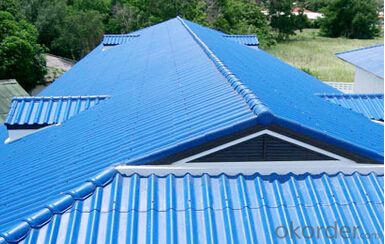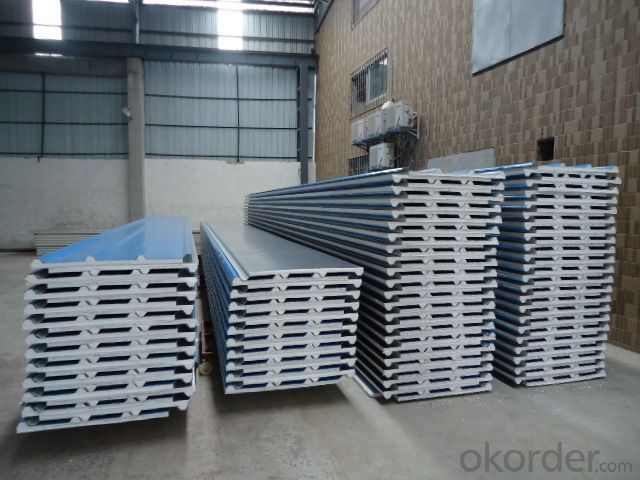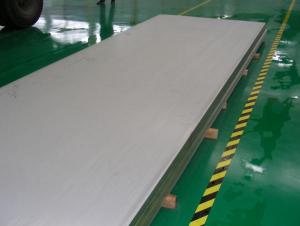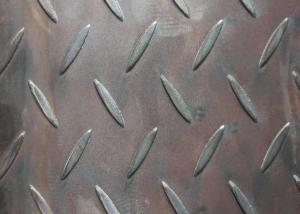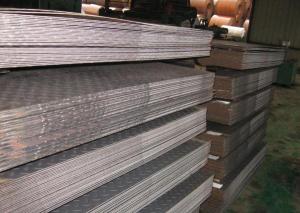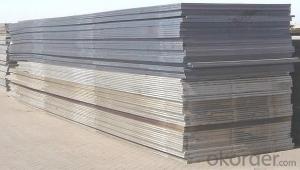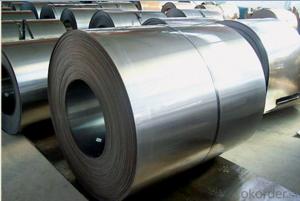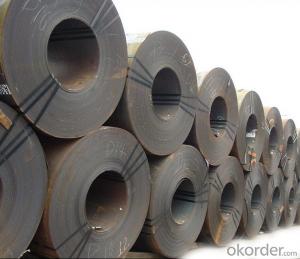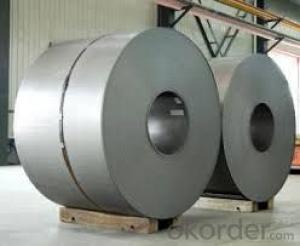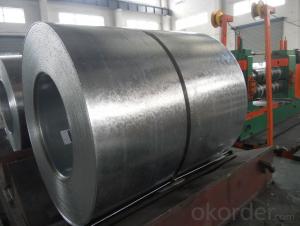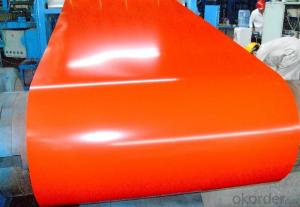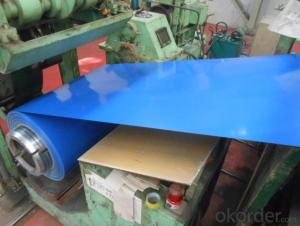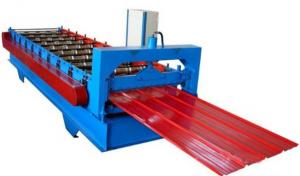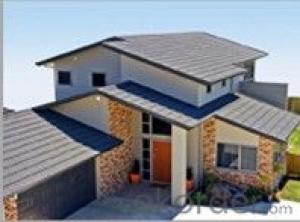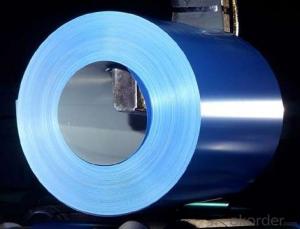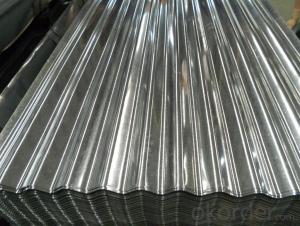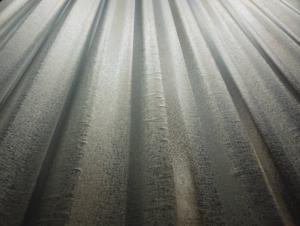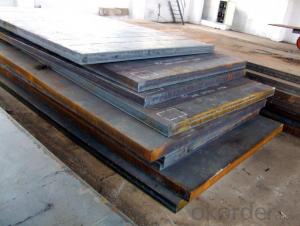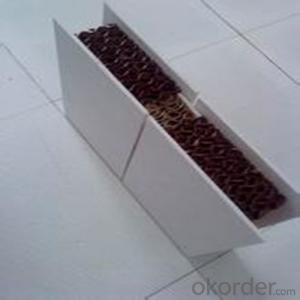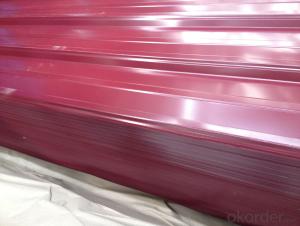Prepainted Galvanized roofing sheet
- Loading Port:
- Tianjin
- Payment Terms:
- TT OR LC
- Min Order Qty:
- -
- Supply Capability:
- 5000 m.t./month
OKorder Service Pledge
OKorder Financial Service
You Might Also Like
Pre painted Galvanized roofing sheet
1> thickness: 0.12mm - 4.5mm
2> width:762mm/914mm/1200mm
3> length:Any length
4> basic material: galvanized steel sheet, Aluminum steel sheet
5> Zinc (Al) coating: 60g/m2 - 270g/m2
6> shape: corrugated
7> mainly usage: roof.
8> color: RAL card
9> Package: standard export package or as customer's requirement
| Corrugated steel sheet | ||
| species | Galvanized corrugatsheeted steel | Prepainted galvanized corrugated steel sheet (Color coated corrugated steel sheet) |
| Surface | big spangle, small spangle, no spangle | Color coated as Ral series colors |
| thickness | 0.12mm - 4.5mm | 0.12mm - 4.5mm |
| width | 672mm - 1250mm or as customer's demand | 672mm - 1250mm or as customer's demand |
| length | 1m-12m or as customer's requirement | 1-12m or as customer's requirement |
| basic material | cold rolled steel coil | galvanized steel coil |
| Process | Cold rolled steel coil + hot galvanized + corrugated | Cold rolled steel coil + hot galvanized + color coated + corrugated |
- Q: What is the maximum thickness of steel sheets?
- The maximum thickness of steel sheets can vary depending on various factors such as the type of steel, manufacturing process, and application. However, in general, steel sheets can range in thickness from a few millimeters to several centimeters.
- Q: Can steel sheets be used for signage purposes?
- Yes, steel sheets can be used for signage purposes. Steel sheets are durable and can withstand harsh weather conditions, making them suitable for outdoor signage. They can be cut, shaped, and welded into various sizes and designs, providing flexibility in creating custom signage. Steel sheets can also be painted or coated with different finishes to enhance aesthetics and ensure longevity. Additionally, steel sheets are sturdy and can be mounted securely, making them ideal for large and heavy signage installations.
- Q: What is the maximum thickness of steel sheets?
- The maximum thickness of steel sheets can vary depending on various factors such as the type of steel, manufacturing process, and application. However, in general, steel sheets can range in thickness from a few millimeters to several centimeters.
- Q: How do steel sheets handle static electricity?
- Steel sheets are generally good conductors of electricity, including static electricity. This means that when static electricity is present, it will easily flow through the steel sheet and dissipate, reducing the likelihood of any buildup or discharge of static electricity.
- Q: What are the different types of surface finishes available for steel sheets?
- Some different types of surface finishes available for steel sheets include hot rolled, cold rolled, galvanized, and coated finishes.
- Q: What is the thermal conductivity of stainless steel sheets?
- The thermal conductivity of stainless steel sheets can vary depending on the specific alloy, grade, and thickness. However, on average, stainless steel has a thermal conductivity of around 16-26 W/m·K, which is relatively low compared to other metals like copper or aluminum.
- Q: What's the difference between hot-rolled seamless steel tube and cold-rolled seamless steel tube?
- Cold rolled seamless steel pipe (DIAL) in general, steel pipe for low and medium pressure boiler tube, high-pressure boiler steel pipe, alloy steel pipe, stainless steel pipe, oil cracking tube and other steel tube, including carbon thin-walled steel, alloy thin-walled steel, stainless steel, thin steel tube.
- Q: How do steel sheets compare to other types of sheet materials?
- Steel sheets have several advantages over other types of sheet materials. Firstly, steel sheets are extremely durable and have a high strength-to-weight ratio, making them suitable for a wide range of applications. They also offer excellent resistance to corrosion, which is a significant advantage in harsh environments. Moreover, steel sheets can withstand high temperatures, making them ideal for applications that involve heat exposure. Additionally, steel sheets are highly versatile and can be easily customized to meet specific requirements. Overall, the superior strength, durability, and versatility of steel sheets make them stand out when compared to other sheet materials.
- Q: What are the different thickness options available for steel sheets?
- The thickness options available for steel sheets vary, depending on the specific requirements and applications. Common thicknesses range from 0.4 mm (thin gauge) to 6 mm (thick gauge), with intermediate options such as 1.5 mm, 3 mm, and 4.5 mm also available. These different thicknesses offer flexibility in terms of strength, durability, and suitability for various industrial and construction purposes.
- Q: How do you prevent scratches or dents on steel sheets?
- One way to prevent scratches or dents on steel sheets is by handling them with care and using protective measures, such as wearing gloves and using padding or protective covers during transportation or storage. Additionally, ensuring a clean and debris-free work area and avoiding contact with sharp or rough surfaces can help minimize the risk of scratches or dents on steel sheets.
Send your message to us
Prepainted Galvanized roofing sheet
- Loading Port:
- Tianjin
- Payment Terms:
- TT OR LC
- Min Order Qty:
- -
- Supply Capability:
- 5000 m.t./month
OKorder Service Pledge
OKorder Financial Service
Similar products
Hot products
Hot Searches
Related keywords
